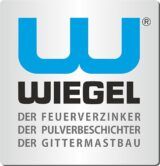In the age of digitalization, staying ahead of the competition only becomes possible when your business lives up to its full potential – day in and day out. In these accelerated times, however, keeping up this resolution seems to be easier said than done and it turns out to be a challenge for companies across all industrial sectors.
To prevail in this data-driven period, an efficient and future-oriented ERP implementation has become an absolute necessity. Yet, many companies shy away from making an ERP upgrade and rather stick to older and less productive systems, since they dread a long, problematic integration process.
All these concerns are nullified, when it comes to an SAP S/4HANA migration: not only does an ERP implementation of SAP’s most powerful platform provide businesses with extraordinary performance in data processing and analysis as well as forward-looking expandability. The SAP S/4HANA transition is also easy and customers have the choice between 3 suitable migration paths:
Each approach can be adjusted to the specific requirements of every company in order to guarantee a smooth system integration.



















